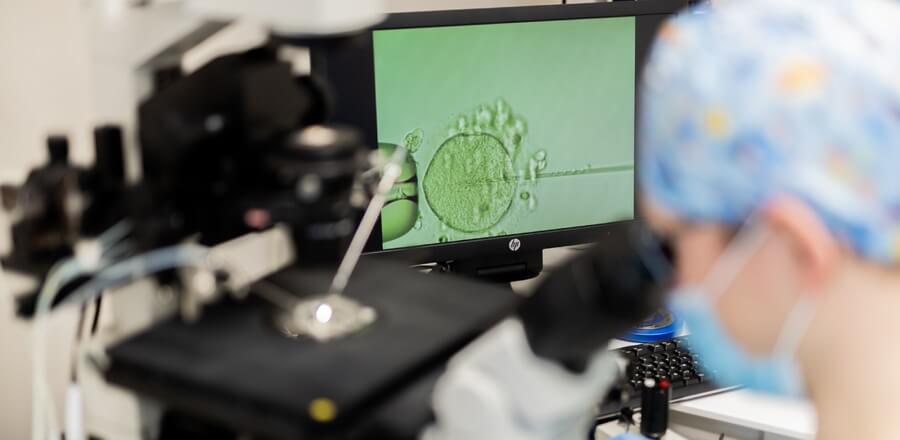
ICSI (Intracytoplasmic sperm injection) is a type of extracorporal artificial insemination – injection of a single spermatozoon into the cytoplasm of the egg cell.
When is the ICSI method chosen for the treatment of infertility?
The ICSI manipulation is used in the event of a severe male infertility (a low sperm count, abnormalities or low sperm motility). A successful injection of a spermatozoon into the egg cell requires just a few live, morphologically normal spermatozoons.
According to the Latvian law, the ICSI procedure can be performed in heterosexual couples using partner sperm or donor sperm, as well as in single women up to 49 years of age.
Step-by-Step ICSI Procedure
1. A preliminary office visit to a fertility specialist (for a detailed medical history, identification of the potential reasons for infertility)
2. An office visit to the fertility specialist + a transvaginal ultrasound – establishment of the structure of the uterus and the ovaries, any anatomic peculiarities etc. + tests (blood and urine tests, swabs) associated with the ICSI procedure + medications (as necessary)
3. Procedures Required Prior to ICSI:
- Hysterosalpingoscopy (a method of examination which helps to evaluate the shape, size, any potential alterations or peculiarities of the uterine cavity as well as the permeability of the Fallopian tubes)
- or hysteroscopy (an examination of the uterine cavity with an optical probe)
- Blood tests: FSH and oestradiol levels, and others
- Sperm analysis (evaluation of sperm count, structure and motility), function test
- Routine blood tests (thyreotropic hormones, prolactin, blood group and rhesus factor as well as testing for contagious diseases, such as STDs (chlamydiosis, syphilis, HIV and others) etc.
4. Waiting for the start of a new natural menstruation, gonadotropin injections (e.g., Gonal F) for an average of 10 days
5. USG monitoring 3 times during the stimulation
6. Induction of ovulation when follicles reach the size of 18-20 mm (injection of Pregnyl or Ovitrelle); scheduling of the ovum pick-up (puncture) day.
7. The puncture (ICSI procedure) normally takes place on Day 12 after the start of the stimulation:
- Ovum pick-up (carried out under short acting general anaesthesia)*
- Sperm collection and its preparation for the in vitro ICSI manipulation (the obtained egg cells are placed in a special environment, and, thereafter, spermatozoons are injected into the egg cell’s cytoplasm)*
*The procedure takes approximately 4 hours
8. Embryo cultivation or growing up to Day 3-5
9. Embryo transfer to the uterus
10. Supporting pharmacological therapy for at least 14 days
11. HCG, progesterone level testing on Day 14 after the embryo transfer
12. A USG scan in 4 weeks to confirm clinical pregnancy
Depending on the results of the test and the USG scan, the doctor establishes whether the medication should be continued or stopped.
! We cooperate with the Medrefund company, which helps the UK and Ireland residents claim refund for their treatment abroad.
Sperm preparation in the Sperm Separation Device for ICSI procedure
Selection of the best sperm, bringing the procedure as close as possible to natural processes. The Sperm Separation Device is designed to prepare motile sperm from semen for use in the treatment of infertile couples using intracytoplasmic sperm injection (ICSI) procedures. This ensures the separation of optimally functioning sperm without the use of damaging chemicals or density gradient centrifugation (DGC).

 en
en lv
lv ru
ru lt
lt se
se no
no

